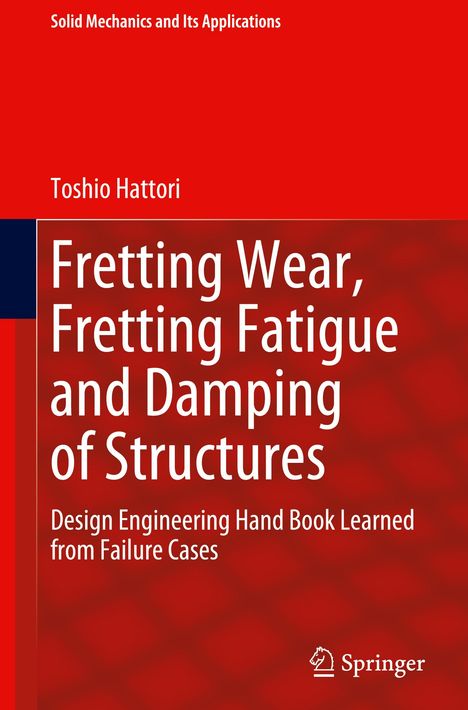Toshio Hattori: Fretting Wear, Fretting Fatigue and Damping of Structures
Fretting Wear, Fretting Fatigue and Damping of Structures
Buch
- Design Engineering Hand Book Learned from Failure Cases
lieferbar innerhalb 2-3 Wochen
(soweit verfügbar beim Lieferanten)
(soweit verfügbar beim Lieferanten)
EUR 164,28*
Verlängerter Rückgabezeitraum bis 31. Januar 2025
Alle zur Rückgabe berechtigten Produkte, die zwischen dem 1. bis 31. Dezember 2024 gekauft wurden, können bis zum 31. Januar 2025 zurückgegeben werden.
- Springer Nature Switzerland, 01/2024
- Einband: Gebunden, HC runder Rücken kaschiert
- Sprache: Englisch
- ISBN-13: 9783031464973
- Bestellnummer: 11724547
- Umfang: 408 Seiten
- Nummer der Auflage: 24001
- Auflage: 1st ed. 2024
- Gewicht: 850 g
- Maße: 241 x 160 mm
- Stärke: 26 mm
- Erscheinungstermin: 3.1.2024
- Serie: Solid Mechanics and Its Applications - Band 276
Achtung: Artikel ist nicht in deutscher Sprache!
Klappentext
This book provides a comprehensive overview of the mechanical distinctions between fretting damage under axial or bending external forces and fretting damage under a torsional load. It emphasizes the importance of studying practical accident cases to efficiently acquire technical skills. The book is structured around the fundamental technologies of material science, tribology, and mechanics, which are vital for understanding and addressing technical issues. The author has incorporated all fretting countermeasure technologies, which were previously often sensory and empirical in nature, and repositioned them as technologies grounded in fundamental principles. The book proposes an economical approach to product operation that maintains reliability by integrating not only design technology but also maintenance practices.It delves into specific materials, such as titanium alloys and aluminum alloys, which have seen increased use for weight reduction in industries like aerospace.
In this book, Critical Distance Stress Theory that can easily derive the fatigue limit and fatigue life of the stress singular field at the contact edge was presented. As a result, the fretting fatigue strength and life can be predicted from the same FEM stress analysis as the normal stress concentration part.
And finally, introducing a novel fretting mechanical model, the book focuses on scenarios where pressure force (N) and repeated tangential force (F) are applied to two planar objects, with the tangential force being transmitted solely through friction at the contact surface. This model finds relevance in turbine blade connection structures, among other applications. The author references Asai's research example, which encompasses fretting mechanical analysis, fretting wear evaluation, fatigue assessment, and structural damping evaluation using this model.


